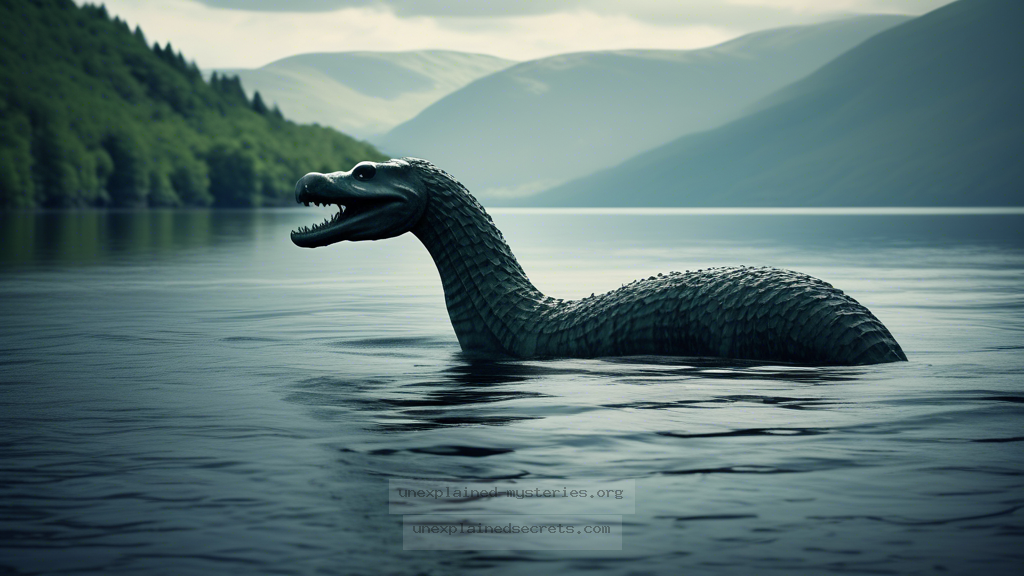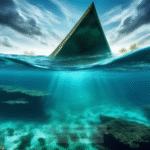What Secrets Lie Beneath the Surface of Loch Ness? Analyzing the Sonar Detections of the Elusive Monster
What Secrets Lie Beneath the Surface of Loch Ness? Analyzing the Sonar Detections of the Elusive Monster
The Loch Ness Monster, affectionately known as “Nessie,” has captivated the imaginations of people around the world for decades. As one of the most enduring mysteries in cryptozoology, the question of whether a prehistoric creature lurks in the depths of Scotland’s famous loch is not just a matter of legend but also a subject of scientific inquiry. Sonar detections have played a pivotal role in the ongoing investigation into this legendary creature. What secrets do these sonar findings reveal, and how do they contribute to our understanding of Loch Ness? In this comprehensive exploration, we will delve into the historical context, core theories, practical implications, and future developments surrounding sonar detections in Loch Ness.
Historical Context: The Origins of the Loch Ness Legend
The legend of the Loch Ness Monster dates back to ancient times, with the first recorded sighting occurring in the 6th century AD, attributed to St. Columba. According to historical accounts, St. Columba encountered a “water beast” while on a mission to convert the Picts to Christianity. This early report laid the groundwork for centuries of fascination with the loch. In the 20th century, the modern legend of Nessie took off, particularly with the publication of the infamous “Surgeon’s Photo” in 1934, which purported to show a large creature in the water.
As the years passed, numerous sightings and reports emerged, with witnesses describing various shapes and sizes of the creature. The advent of sonar technology in the latter half of the 20th century marked a turning point in the search for Loch Ness. Scientists began using sonar to explore the depths of the loch, leading to intriguing findings that stirred both excitement and skepticism among enthusiasts and researchers alike.
Understanding Sonar Technology: How It Works
Sonar, which stands for Sound Navigation and Ranging, utilizes sound waves to detect objects underwater. The technology operates by emitting sound pulses and measuring the time it takes for the echoes to return after bouncing off objects. This method allows researchers to create detailed maps of the underwater landscape and identify potential anomalies that could indicate the presence of large creatures.
There are primarily two types of sonar used in underwater exploration: active sonar, which actively emits sound waves, and passive sonar, which listens for sounds made by objects underwater. In the case of Loch Ness, both types have been deployed at various times, enabling researchers to gather significant data about the loch’s depths and its inhabitants.
Core Theories: What Do the Sonar Detections Reveal?
Over the years, sonar investigations have produced a variety of intriguing results. One of the most notable sonar expeditions was conducted by the research team in 1987, known as the “Operation Deepscan.” During this operation, a fleet of boats equipped with sonar technology scanned the loch, resulting in the detection of a large, unidentified object. The sonar readings indicated a sizable presence at a depth of approximately 240 feet, igniting speculation that it could be Nessie.
- Detection of a large object at a depth of 240 feet.
- Multiple sonar returns suggestive of a large entity moving in the water.
- No conclusive evidence of the creature’s identity, leading to further questions.
While these findings were exciting, they did not provide definitive proof of Nessie’s existence. The sonar data could represent various underwater formations, debris, or even fish schools. Subsequently, sonar technology has improved, allowing for more sophisticated analyses and clearer interpretations of the data collected.
Practical Implications: The Impact of Sonar Research
The use of sonar technology in Loch Ness has not only deepened our understanding of the loch’s ecology but has also raised important questions regarding conservation and the preservation of local wildlife. The possibility that sonar operations could disturb aquatic species is a critical consideration for researchers.
Additionally, sonar research has provided insights into the biodiversity of Loch Ness. Studies have revealed that the loch is home to various fish species, including salmon and trout, as well as larger creatures like otters. Understanding these ecosystems is essential for maintaining the health of the loch, regardless of whether Nessie exists.
Alternative Perspectives: Skepticism and Criticism
Despite the excitement surrounding sonar detections, skepticism is a significant aspect of the Loch Ness Monster narrative. Critics argue that many sonar readings attributed to Nessie can be explained by more mundane phenomena, such as underwater currents, boat traffic, or even natural geological formations. For instance, the “large object” detected during Operation Deepscan was later suggested to be a shoal of fish or underwater debris rather than a prehistoric creature.
Moreover, the sensationalism surrounding Nessie has led to numerous hoaxes and misinterpretations of sonar data. This has fueled skepticism about the integrity of some research efforts. A critical viewpoint emphasizes the need for rigorous scientific methodologies when investigating claims of cryptids like Nessie, advocating for a more cautious approach to interpreting sonar findings.
Common Misconceptions: Clarifying the Myths
Several misconceptions persist regarding sonar research in Loch Ness and the creature itself. One such myth is that all sonar detections are evidence of Nessie. In reality, sonar technology is a tool that requires careful analysis and interpretation. Not every sonar anomaly indicates the presence of a large creature; many factors can produce false positives.
Another common misconception is that Nessie must be a dinosaur-like creature. While some enthusiasts believe this, the actual biology of such a creature raises numerous questions, including its diet, breeding habits, and ecological niche. These complexities often lead to misconceptions about what Nessie could be if it were to exist.
Best Practices for Investigating Loch Ness
For those interested in pursuing research or exploration of Loch Ness, adhering to best practices is crucial. Here are key recommendations:
- Use Reliable Equipment: Ensure that sonar and other technological tools are up-to-date and calibrated for accurate readings.
- Collaborate with Experts: Work with marine biologists and cryptozoologists who can provide valuable insights and knowledge.
- Document Everything: Maintain meticulous records of data, observations, and methodologies to ensure transparency and reproducibility.
- Engage with Local Communities: Involve local residents and historians who may have valuable anecdotal evidence and insights.
Future Developments: Ongoing Research and Technological Advances
The quest to uncover the truth behind Loch Ness continues to evolve, with advancements in technology promising new avenues for exploration. Future research may incorporate more sophisticated sonar systems, including multi-beam sonar and underwater drones equipped with cameras. These technologies can provide a more comprehensive view of the loch’s depths and potentially reveal new findings.
Moreover, ongoing citizen science initiatives allow enthusiasts to contribute to Loch Ness research by reporting sightings and participating in local conservation efforts. The combination of traditional research methods and community involvement could lead to a more holistic understanding of the loch and its mysteries.
Conclusion: The Enigmatic Loch Ness Monster Remains a Mystery
The sonar detections in Loch Ness have undoubtedly added layers to the enduring mystery of the Loch Ness Monster. While these findings have sparked excitement and debate, they also remind us of the importance of scientific rigor and critical thinking in the pursuit of cryptozoological inquiries. As we continue to explore the depths of Loch Ness, we must remain open to both the possibilities and the limitations of what sonar technology can reveal.
Whether Nessie is a creature of myth or a yet-to-be-discovered species, the legend of Loch Ness will continue to inspire curiosity and wonder. As technology progresses and research methodologies improve, the secrets of Loch Ness may one day be unveiled, offering clarity to one of the most captivating mysteries of our time.
Other Articles
Recent Posts
- What Happened to Flight MH370? The Conspiracy Theories That Still Haunt Us
- What Secrets Lurk Within the Walls of the Infamous Trans-Allegheny Lunatic Asylum?
- What Evidence Supports the Existence of Bigfoot in the Pacific Northwest?
- What Happened to the Indus Valley Civilization? Unraveling the Mysteries of Ancient Urban Life
- Can Telepathy Be Scientifically Proven Through Laboratory Evidence?







